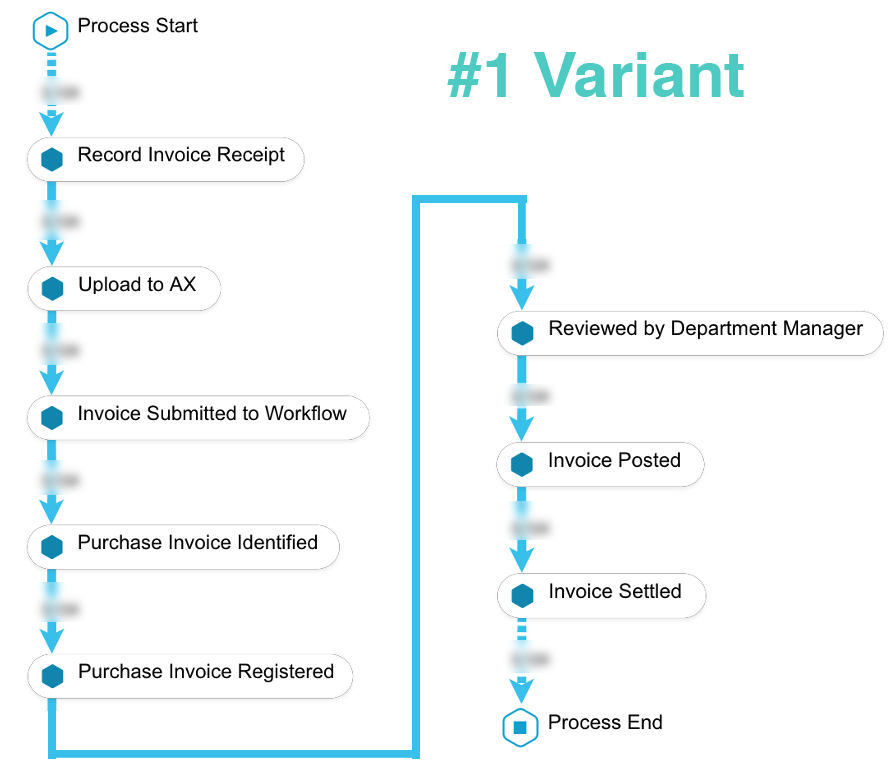Ampelmann Purchase-To-Pay
Ampelmann has revolutionised transportation of personnel and cargo between vessels and offshore structures. What used to be a hazardous and expensive operation, has become as easy as crossing the street with the help of an Ampelmann system. With more than 6 million people and 13 million KG cargo transfers, Ampelmann is the global leader for offshore gangway systems. Being a global leader comes with many challenges. One of them is managing your business processes to stay efficient and compliant. Ampelmann, headquartered in Delft, got in touch with Apolix to take a closer look at their purchase-to-pay process with the help of process mining. For any finance department data-driven decision making is invaluable. Therefore, Ampelmann was keen to learn more about the efficiency and the underlying drivers of their purchase-to-pay process, with the emphasizes on the discovery of their as-is process flow. These requirements perfectly fit in the business case for process mining as Apolix can create a transparent objective image of a process by taking unused data from their ERP system. Project Methodology The purchase-to-pay process at Ampelmann flows mainly through Microsoft Dynamics AX and a couple of external modules. Process mining is ideal for this, as with the help of the Celonis software, we can follow a unique case over multiple IT-systems. Even though most users do not realise this, almost every action performed by a user in an IT-system is recorded in a database. Therefore, we had access to rich data which gives great insights in the entire purchase-to-pay process of Ampelmann. Every step, from submitting a purchase order to invoice approval and settle date could be traced back several years. Based on all the identified activities and their timestamps, we generated a transparent overview of the entire process flow. Additionally, Celonis enables us to add contextual data like vendors and purchased items. Consequently, this context enabled Apolix to perform root cause analyses for drivers behind inefficiencies and non-compliance. By discussing early results during a process mining project, we create extra value to evaluate and establish additional goals. As a result, you can generate a better direction and insights that add more value. For example, a focus point in the purchase-to-pay process can be the realisation of cashflow discounts. In Ampelmann’s case, the main focus remained creating a transparent overview of their as-is process. This included benchmarking the efficiency of the process flow for invoices with and without purchase orders and underlying drivers. I am very impressed with the quick […]

tags
date
19 May 2020Ampelmann has revolutionised transportation of personnel and cargo between vessels and offshore structures. What used to be a hazardous and expensive operation, has become as easy as crossing the street with the help of an Ampelmann system. With more than 6 million people and 13 million KG cargo transfers, Ampelmann is the global leader for offshore gangway systems. Being a global leader comes with many challenges. One of them is managing your business processes to stay efficient and compliant. Ampelmann, headquartered in Delft, got in touch with Apolix to take a closer look at their purchase-to-pay process with the help of process mining.
For any finance department data-driven decision making is invaluable. Therefore, Ampelmann was keen to learn more about the efficiency and the underlying drivers of their purchase-to-pay process, with the emphasizes on the discovery of their as-is process flow. These requirements perfectly fit in the business case for process mining as Apolix can create a transparent objective image of a process by taking unused data from their ERP system.
Project Methodology
The purchase-to-pay process at Ampelmann flows mainly through Microsoft Dynamics AX and a couple of external modules. Process mining is ideal for this, as with the help of the Celonis software, we can follow a unique case over multiple IT-systems.
Even though most users do not realise this, almost every action performed by a user in an IT-system is recorded in a database. Therefore, we had access to rich data which gives great insights in the entire purchase-to-pay process of Ampelmann. Every step, from submitting a purchase order to invoice approval and settle date could be traced back several years. Based on all the identified activities and their timestamps, we generated a transparent overview of the entire process flow. Additionally, Celonis enables us to add contextual data like vendors and purchased items. Consequently, this context enabled Apolix to perform root cause analyses for drivers behind inefficiencies and non-compliance.
By discussing early results during a process mining project, we create extra value to evaluate and establish additional goals. As a result, you can generate a better direction and insights that add more value. For example, a focus point in the purchase-to-pay process can be the realisation of cashflow discounts. In Ampelmann’s case, the main focus remained creating a transparent overview of their as-is process. This included benchmarking the efficiency of the process flow for invoices with and without purchase orders and underlying drivers.
I am very impressed with the quick and useful results Apolix achieved! These insights definitely help me improve our P2P process.
– Ferenc Meuldijk, Teamlead Accounts Payable @ Ampelmann Operations B.V.
General Findings
The most valuable findings during this project relate to the transparent overview of the process flow and the analysis performed on the purchase orders. In the image below, you can find the two most common variants of the process, which also describe the desired process flow. After further inspection of the process, we found a high number of exceptions. These violations cause an increased amount of process variants, which is undesirable.
The majority of these exceptions are found in the invoice approval flow. Process mining enabled us to visualise that purchase orders often cause these exceptions. Additionally, it showed us the direct consequences. Combined with the contextual data, we determined underlying drivers such as specific products groups and vendors. Beyond finding these drivers, it supported us to create an efficient strategy to overcome these violations. On top of that, we determined the impact on the throughput time and conformance rate of the process. Consequently, we were able to calculate the optimal throughput time when the non-compliance is solved. These numbers support Ampelmann setting realistic goals for optimisation projects.


Purchase Orders
As purchase orders are linked to the majority of exceptions, we delved deeper into their process flow. With the help of process mining, Ferenc Meuldijk (Ampelmann’s purchase-to-pay manager) is able to see the impact of purchase orders on the throughput time and isolate the cases with a large impact on the business. A common violation in the process flow is caused by a price mismatch between the invoice and the purchase order. The ability to determine the impact of this violation on the process, strengthens Ampelmann’s position to support problem solving initiatives based on facts rather than intuition.
Manual work
The business case becomes even stronger. The majority of activities performed to clear non-compliance in the process is manual work. One of those activities occurred in over 15% of the cases. In those cases, it was performed twice or more 65% of the time, which indicates mistakes in the manual work. These and similar findings make the impact of mismatches visible and gives clear direction towards solving this problem.
Process mining is an excellent tool to identify rework, as the process flows goes twice through the same activity. This means an activity has been performed, but for some reason it has to be done again. Identifying and solving the root causes boosts the throughput time of your process and saves significant manual work. Another example of rework at Ampelmann is invoices which get stuck in the workflow, are cancelled and re-submitted. By analysing for rework at the activity ‘invoice submitted’ we have been able to identify stuck invoices and the impact on the process flow.
It is amazing to finally have your gut feeling confirmed, from now on we can make decisions based on facts rather than intuition!
– Nazanin Hosseini, ERP Business Consultant @ Ampelmann Operations B.V.
Next Steps
The findings from the project indicate the importance of improving the quality of the purchase orders. Even though Ampelmann has an outstanding throughput time, much manual labour can be prevented. This will result in higher process compliance, efficiency and time within the finance team for other improvement projects.
As a result, Ampelmann gained a transparent overview of the current state of its purchase-to-pay process. The effect of previous and running projects can now be assessed and a clear direction to improve the process is laid out. Based on this snapshot, a new process mining project in the future will give a clear understanding of the progress of the improvement initiatives and enables Ampelmann to set new priorities.






